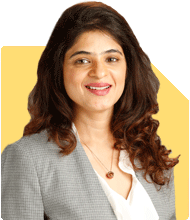Ramalingam Kalirajan |8459 Answers |Ask -Follow
Mutual Funds, Financial Planning Expert - Answered on May 23, 2024
He has an MBA in finance from the University of Madras and is a certified financial planner.
He is the director and chief financial planner at Holistic Investment, a Chennai-based firm that offers financial planning and wealth management advice.... more

I am 25 years old with an income of 37k (Rental income) per month and I set aside 10k every month for investments. I don’t like RD and FD due to its low ROI. I am a Doctor but not yet practising and hopefully in the future get a job in upcoming months. I want to know if my plan of 10k with investment in stocks for 4k and 6k in mutual fund every month will suffice my needs for vacations and passive income for long term. Also at my age what do you think will be a good investment portfolio that I should be considering. Thank you.
Assessing Your Current Investment Plan
Monthly Investment Breakdown
Stocks: Rs. 4,000 per month
Mutual Funds: Rs. 6,000 per month
This diversified approach is a good start, balancing direct equity exposure with the stability and diversification offered by mutual funds.
Evaluating Your Investment Strategy
Stocks
Investing Rs. 4,000 per month in stocks gives you direct exposure to the equity market. This strategy can offer high returns but comes with higher risk.
Considerations:
Research: Choose fundamentally strong companies with good growth prospects.
Diversification: Don’t concentrate too much on one sector or company.
Mutual Funds
Investing Rs. 6,000 per month in mutual funds is a prudent choice. Mutual funds provide diversification and are managed by professional fund managers.
Considerations:
Fund Selection: Choose a mix of large-cap, mid-cap, and small-cap funds for a balanced portfolio.
Review Performance: Regularly review the performance and adjust as necessary.
Planning for Vacations and Long-Term Passive Income
Short-Term Goals: Vacations
To fund your vacations, consider setting aside a portion of your investments in liquid funds or short-term debt funds. These funds offer better returns than savings accounts or FDs and are relatively low-risk.
Action Plan:
Liquid Funds: Allocate a portion of your savings to liquid funds for short-term goals.
Short-Term Debt Funds: These can provide slightly higher returns with moderate risk.
Long-Term Goals: Passive Income
For long-term passive income, continue your SIPs in mutual funds and diversify your stock portfolio. Consider adding investments in dividend-yielding stocks or mutual funds that offer regular dividends.
Action Plan:
Dividend-Yielding Stocks/Funds: Invest in stocks or mutual funds known for regular dividend payouts.
Balanced Funds: These can provide a mix of equity growth and regular income.
Ideal Investment Portfolio at Your Age
Equity Mutual Funds
Given your age and long-term horizon, equity mutual funds should form a significant part of your portfolio. They offer the potential for high returns over the long term.
Recommendations:
Large-Cap Funds: Stability and steady growth.
Mid-Cap and Small-Cap Funds: Higher growth potential but with higher risk.
Direct Stocks
Continue investing in direct stocks, focusing on a diversified portfolio. Regularly review and adjust your holdings based on market conditions and company performance.
Recommendations:
Diversify: Spread your investments across different sectors.
Blue-Chip Stocks: These are established companies with a history of reliable performance.
Debt Funds
Include some debt funds to balance risk and provide stability. These funds can protect your portfolio during market downturns.
Recommendations:
Short-Term Debt Funds: Suitable for meeting medium-term goals.
Corporate Bond Funds: Offer higher returns than traditional debt funds but with slightly higher risk.
Tax Implications and Exit Loads
Tax on Investments
Understand the tax implications of your investments to maximize post-tax returns.
Mutual Funds:
Equity Funds: Long-term capital gains (LTCG) are taxed at 10% for gains over Rs. 1 lakh. Short-term capital gains (STCG) are taxed at 15%.
Hybrid Debt Funds: LTCG is taxed at 20% with indexation benefits, and STCG is taxed as per your income slab.
Stocks:
Dividends: Dividend income above Rs. 10 lakh is taxed at 10%.
Capital Gains: Similar to equity mutual funds, LTCG is taxed at 10% and STCG at 15%.
Exit Loads
Be aware of exit loads on mutual funds, which are charges when you redeem units within a certain period. This is usually around 1% if redeemed within a year.
Professional Guidance
Role of a Certified Financial Planner (CFP)
A CFP can provide tailored advice based on your financial goals and risk tolerance. They can help you create a diversified portfolio, optimize tax planning, and ensure you are on track to meet your objectives.
Conclusion
Your current strategy of investing Rs. 4,000 in stocks and Rs. 6,000 in mutual funds each month is a solid start. To achieve your goals of funding vacations and generating long-term passive income, continue this disciplined approach, diversify your portfolio, and consider adding dividend-yielding investments.
Regularly review your portfolio and adjust as needed. Working with a Certified Financial Planner can provide you with professional guidance to navigate the complexities of investing and ensure you stay on track towards financial success.
Best Regards,
K. Ramalingam, MBA, CFP
Chief Financial Planner
www.holisticinvestment.in
You may like to see similar questions and answers below
Ramalingam Kalirajan |8459 Answers |Ask -Follow
Mutual Funds, Financial Planning Expert - Answered on May 09, 2024
Ramalingam Kalirajan |8459 Answers |Ask -Follow
Mutual Funds, Financial Planning Expert - Answered on Jun 04, 2024
Ramalingam Kalirajan |8459 Answers |Ask -Follow
Mutual Funds, Financial Planning Expert - Answered on Jul 10, 2024
Ramalingam Kalirajan |8459 Answers |Ask -Follow
Mutual Funds, Financial Planning Expert - Answered on Nov 29, 2024
Prof Suvasish Mukhopadhyay |651 Answers |Ask -Follow
Career Counsellor - Answered on May 16, 2025
Prof Suvasish Mukhopadhyay |651 Answers |Ask -Follow
Career Counsellor - Answered on May 16, 2025
Radheshyam Zanwar |1634 Answers |Ask -Follow
MHT-CET, IIT-JEE, NEET-UG Expert - Answered on May 16, 2025
Radheshyam Zanwar |1634 Answers |Ask -Follow
MHT-CET, IIT-JEE, NEET-UG Expert - Answered on May 16, 2025
Ashwini Dasgupta |107 Answers |Ask -Follow
Personality Development Expert, Career Coach - Answered on May 16, 2025
Ramalingam Kalirajan |8459 Answers |Ask -Follow
Mutual Funds, Financial Planning Expert - Answered on May 16, 2025
Ramalingam Kalirajan |8459 Answers |Ask -Follow
Mutual Funds, Financial Planning Expert - Answered on May 16, 2025
Milind Vadjikar |1236 Answers |Ask -Follow
Insurance, Stocks, MF, PF Expert - Answered on May 16, 2025
Milind Vadjikar |1236 Answers |Ask -Follow
Insurance, Stocks, MF, PF Expert - Answered on May 16, 2025
Ravi Mittal |589 Answers |Ask -Follow
Dating, Relationships Expert - Answered on May 16, 2025



























